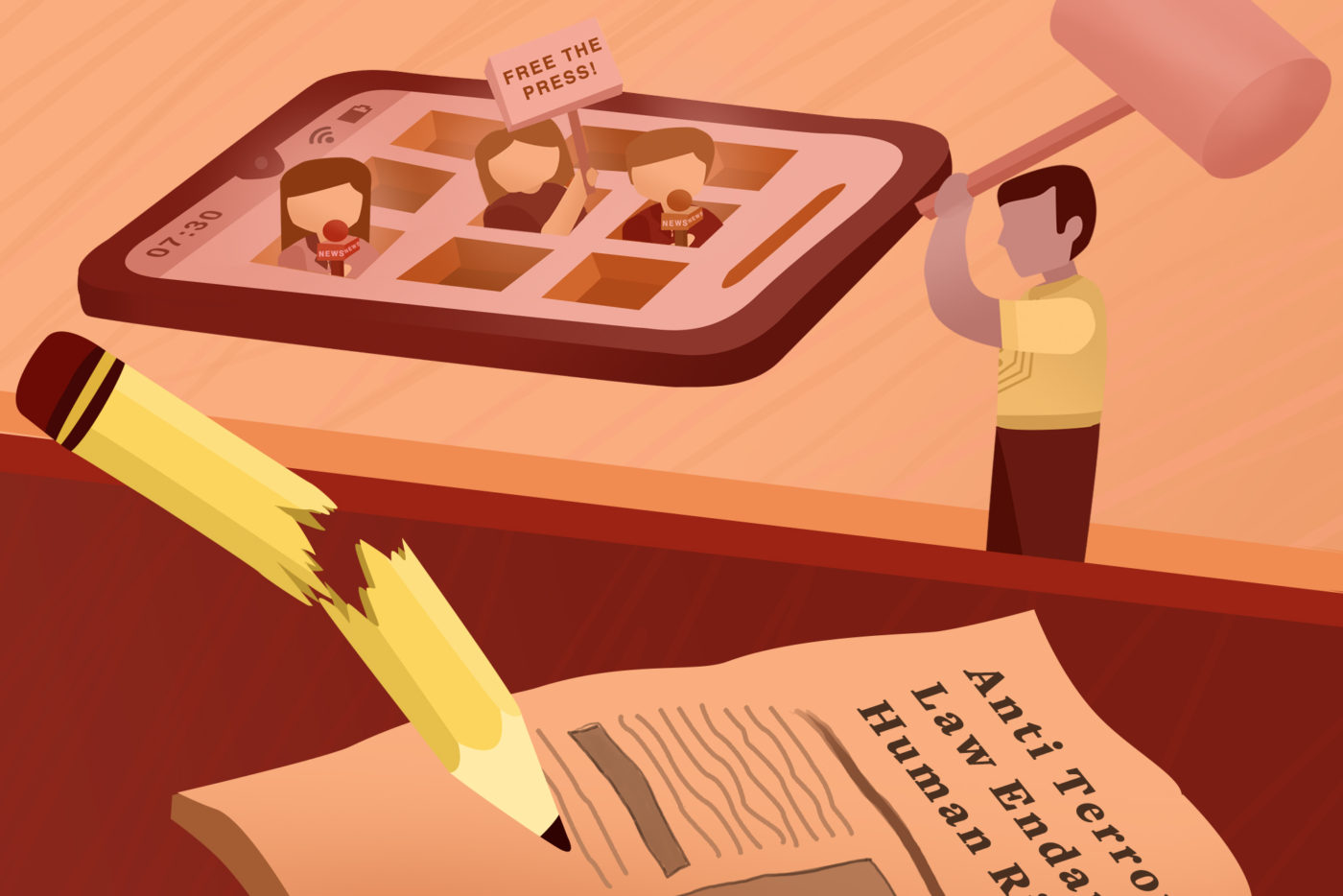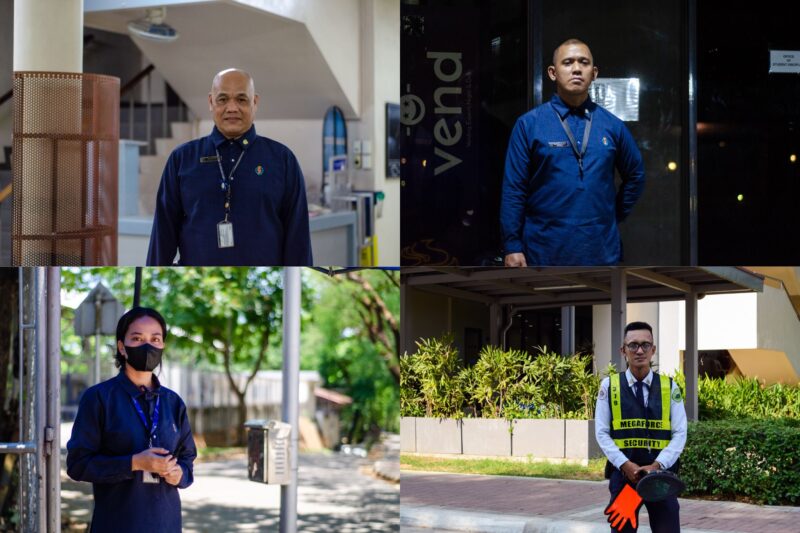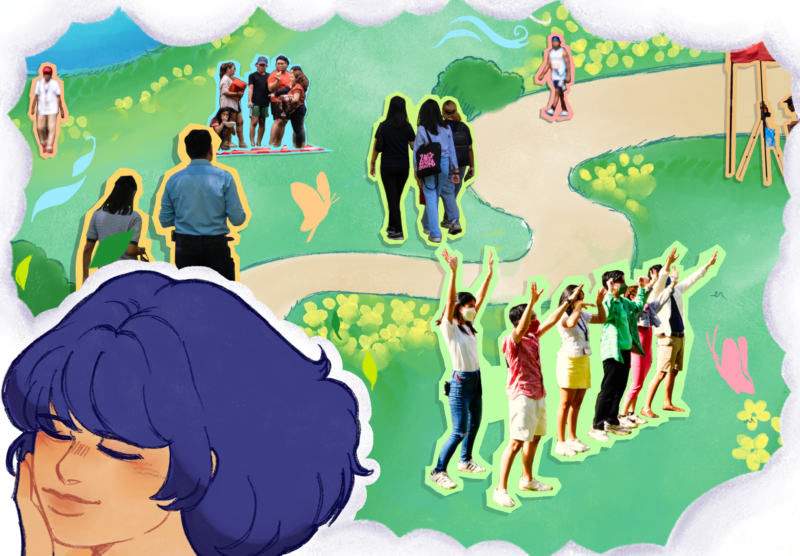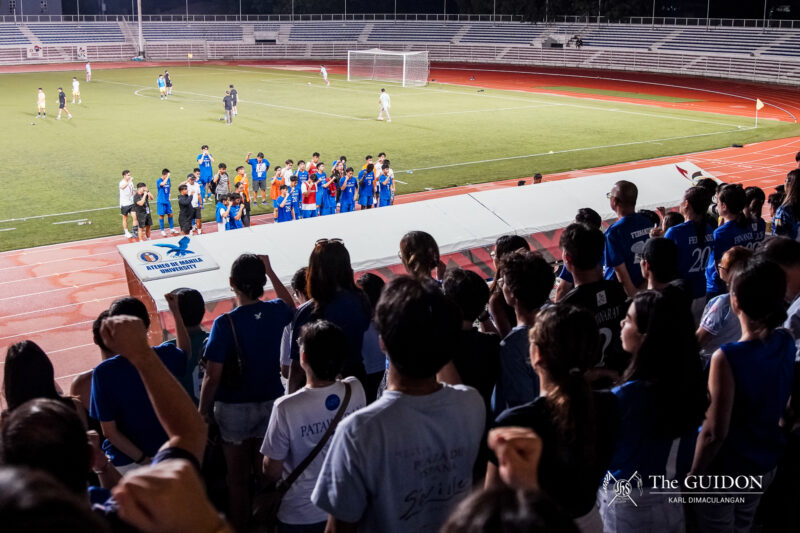WHEN FIGURES of power push the press to silence, the truth fades out from national consciousness. The Philippines has witnessed this silencing before: Once under the dictatorial rule of Ferdinand Marcos, and once more today, as ABS-CBN is shut down for the second time in history.
History has proven that a muzzled press can lead to dire consequences: Thousands of jobs lost, narratives left muted, and truths tossed into the fog of obscurity. However, history has also revealed that the fight to defend press freedom does not lie solely in the hands of the silenced journalists—it also finds refuge in the artists that speak truths to power in their stead.
Silence means death
The face of suppression is one that has long knocked on the media’s doors. On September 28, 1972, within the first week of Marcos’ Martial Law, the Department of National Defense seized and silenced numerous privately-owned media outlets such as ABS-CBN and Channel 5. Various acclaimed journalists and publishers such as Teodoro Locsin Sr. and Chino Roces, among others, were also ordered “neutralized.” The media and its members were defanged—leaving the stories that needed to be told too quiet to be heard.
Journalist and Audience Development Head for ABS-CBN News Digital Arlene Burgos shares that media suppression spells danger for the health of our democracy. “[…] [The news]…is the currency we use in transacting in a democracy,” she says.
Furthermore, Burgos asserts that without the media’s critical reportage, citizens lose a vital source of information to guide them in electing public officials and holding them accountable. She stresses, “If [the ability for the citizenry to be informed] is under threat or is undermined, we will not be able to enjoy all the other freedoms like our freedom of expression, as all our other liberties are rooted in the freedom of the press.”
Today, contemporary Philippine media holds more power in speaking critically of the government compared to its state during the Martial Law era—as evidenced by journalists’ resounding denunciation of the ABS-CBN shutdown in July. Burgos stresses that journalists now “[operate] under a regimen of free press,” which did not exist under Marcos’ dictatorship. The advent of social media has also made news more accessible to regular citizens—however, Burgos warns that it is “a double-edged sword.”
“In the hands of the abusive, the reckless, the foolish, and the enemy of democracy, social media could be subverted and undermined, and used as a dangerous weapon to dumb down the people and feed them lies,” she asserts.
In spite of the freedom of information that post-Marcos administrations championed, media suppression’s ominous re-emergence—as evidenced by the ABS-CBN shutdown slated to deprive millions of Filipinos from information—suggests that defending the institutions that comprise our democracy is a battle that journalists cannot fight alone.
“Wala nang diyaryo”
With journalists’ storied history with media suppression, artists have rushed in to rally behind the fight to draw and to hold the line through their craft.
Filipino writer Jose Dalisay Jr. recounts his story of the First Quarter Storm. “I was even in UP when Martial Law was declared and I thought I had a scoop because I was on the spot, [so] I called [the night editor], and they said… ‘Wala nang diaryo’ because we’re under attack ourselves and there are guns being pointed at us.” From there, Dalisay wrote for the underground press and was arrested for over seven months in Fort Bonifacio. By the time he was released, several media outlets were already shut down.
With the death privately-owned media, Dalisay turned to creative writing as literature had freer room for political commentary through allegories and metaphors. “The government does not read or understand plays, novels, poems, [but] it understands journalism. And I’ve always made a point of this, that the writers who are most threatened—who are most vulnerable in this country to repression are the journalists,” he says.
Dalisay is joined by other artists who also kept the truth alive in the arts. For instance, Freddie Aguilar wrote “Bayan Ko,” which has been used for protests and has become the “quintessential anthem of a suppressed nation.”
Francisco Sionil José is another notable case to consider. He founded the Philippine Center of International Poets, Playwrights, Essayists, and Novelists (Philippine PEN), a community of writers who stood in defense of freedom of expression and speech during the Martial Law era and even to this day. Since its foundation in 1958, the Philippine PEN has organized seminars, workshops, and conferences tackling such advocacy—and even hosted a congress that sparked discourse on “fake news and repressive regimes.”
Today, Dalisay believes that the new battleground for truth-telling in art is social media. He notes how interactions are now instantaneous, and names Twitter as an example: “Tweets…have room for originality, wit, and humor. So there’s a lot of space for art there that normally people can engage in.” Through social media, artists can also hold the line and make their own political statements or content that will, in a way or another, speak the truth to power.
Armed with this knowledge, Dalisay believes that artists must step in when the free press is threatened. “If you’re a writer, you have no proper business but to write the truth,” he says. “Writers have to choose sides, and I think most writers will choose the side of the truth, because if we don’t do that then who will?”
Dalisay says that the artist’s task is to continue honing their craft that depicts the truths of today so that the Filipinos of tomorrow “will understand what exactly happened.”
The truth and the Filipino
As the nation grapples with the effects of the COVID-19 pandemic, Filipinos’ sources of essential information are slowly being put out by those in power once again. While the fight for free press ensues, artists lend a hand through creative truth-telling.
From the media’s straightforward reportage to the arts’ creative and allegorical truth-telling, the Filipino citizenry remains steadfast in protecting their liberties regardless of the timeline.
Editor’s Note: Arlene Burgos’ views do not reflect the position of ABS-CBN.







